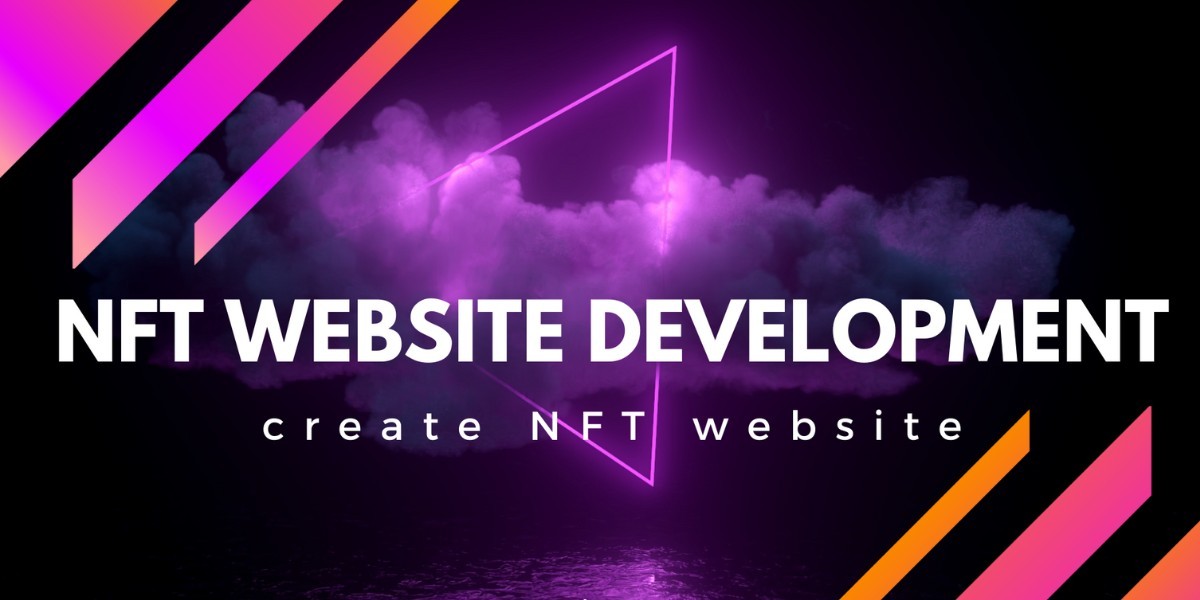The advent of Non-Fungible Tokens has transformed the art world, offering artists and collectors a new realm of possibilities to showcase and trade digital art. Central to the success of NFTs is the development of well-crafted websites that serve as digital art havens.
NFT Website Development, Insights and Best Practices to Create Captivating Platforms That Celebrate and Elevate Digital Art:
Understanding the NFT Landscape:
Before diving into website development, it's crucial to have a comprehensive understanding of the NFT landscape. Familiarize yourself with the underlying blockchain technology, different platforms (such as Ethereum, Flow, or Binance Smart Chain), and the intricacies of NFT creation, ownership, and trading. This knowledge will inform your development decisions and ensure a seamless integration of NFT functionality.
User-Centric Design:
An exceptional user experience is paramount in NFT Website Development. Craft a user-centric design that focuses on simplicity, intuitive navigation, and efficient information architecture. Showcase digital art prominently, allowing visitors to explore and appreciate the artwork effortlessly. Pay attention to aesthetics, ensuring that the design complements and enhances the digital art's visual impact.
Responsive and Mobile-First Approach:
In an era dominated by mobile devices, adopting a responsive and mobile-first approach is essential. Optimize your NFT website for various screen sizes, ensuring seamless and visually appealing experiences across devices. Prioritize mobile usability, considering touch-friendly interactions and streamlined mobile navigation. Thoroughly test your website's responsiveness on different devices to guarantee a consistent experience.
Secure and Reliable Infrastructure:
As NFTs represent valuable digital assets, security should be a top priority. Implement robust security measures, including encryption protocols, secure wallet integrations, and two-factor authentication (2FA), to protect users' artworks and personal information. Regularly conduct security audits and stay updated with the latest security practices to minimize vulnerabilities and maintain a trustworthy platform.
Seamless NFT Integration:
Integrate NFT functionality seamlessly into your website to allow artists to mint and showcase their digital artworks, and collectors to purchase and trade NFTs. Leverage blockchain technology to establish transparent ownership records and ensure the authenticity and provenance of digital art. Implement smart contracts to automate transactions, royalties, and secondary sales.
Social and Community Features:
NFTs thrive on community engagement and social interactions. Incorporate social features into your NFT website to enable artists and collectors to connect with each other. Implement features such as comments, likes, and shares to foster a sense of community and encourage discussions around digital artworks. Consider integrating messaging systems or forums to facilitate direct communication between artists and collectors.
Curated Collections and Discoverability:
Provide curated collections and featured artist sections to showcase exceptional digital artworks and promote emerging talent. Implement comprehensive search and filtering options, allowing users to explore artworks based on categories, styles, artists, or themes. Enhance discoverability by implementing tags and metadata that accurately describe and categorize the digital artworks.
Seamless Transactions and Payments:
Ensure a frictionless transaction process for collectors by integrating secure and user-friendly payment gateways. Support various payment methods, including cryptocurrencies, to accommodate the preferences of users within the NFT ecosystem. Streamline the purchasing process with clear instructions, transparent pricing, and automated issuance of NFTs upon successful transactions.
Analytics and Insights:
Implement analytics tools to gather data and gain insights into user behavior, engagement, and preferences. Analyze metrics such as page views, conversion rates, and user interactions to optimize the user experience and identify areas for improvement. Leverage data-driven insights to refine your marketing strategies, curate collections, and enhance the overall performance of your NFT website.
Ongoing Maintenance and Support:
NFT Website Development is an ongoing process that requires continuous oversight and support. Regularly update your website to accommodate new features, blockchain upgrades, and security patches. Provide prompt customer support to address user inquiries and concerns, ensuring a positive experience for artists and collectors. Stay active within the NFT community, actively seeking feedback and adapting to changing trends.
Conclusion:
Creating captivating NFT websites that serve as digital art havens requires a combination of user-centric design, seamless NFT integration, robust security, social features, discoverability, efficient transactions, analytics, and ongoing support. By demystifying NFT Website Development and embracing these best practices, you can build platforms that celebrate and elevate digital art, fostering a thriving ecosystem for artists and collectors. Embrace the transformative power of NFTs and contribute to the evolution of the art world in the digital age.


